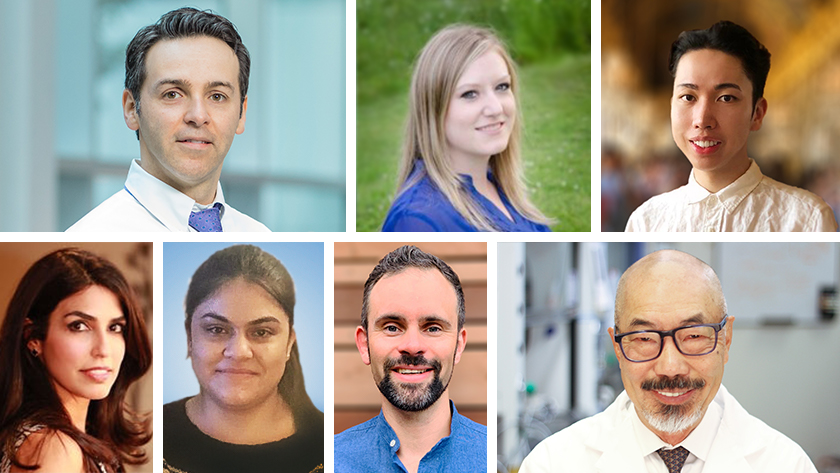
Just like us, the cells that make up our bodies exhibit tremendous diversity. While much research has focused on identifying differences between cells, a UHN collaboration has taken a different tactic by grouping different cells together based on how they are similar.
Led by Drs. Slava Epelman and Tak Mak, Senior Scientists at the Toronto General Hospital Research Institute and Princess Margaret Cancer Centre, the research team identified three distinct subsets of macrophage cells that, despite residing in different tissues throughout the body, share distinguishing traits.
Macrophages are specialized types of immune cells that help the body maintain, defend and repair itself. Differences exist not only among the different types of macrophages but also within individual types and across organs and tissues.
“A lot of great research has recently identified unique populations of macrophages,” says Dr. Epelman. “However, this has led to a disconnect in understanding how the different types are biologically related, especially across different tissues and species.”
To look for similarities in macrophage populations, the team first analyzed more than 15,000 individual macrophage cells from heart, liver, lung, kidney and brain tissues using a technique called single-cell RNA sequencing. This technique enabled the researchers to build profiles that revealed which genes are active in each cell. Active genes often code for proteins, which carry out most of the work in the cell; therefore, the profiles that were identified provide key insights into how each cell functions.
When comparing the sequencing profiles, the researchers found that they could group macrophages into three well-defined subsets based on whether certain genes produced at high or low levels. These subsets grouped different cells together regardless of their location in the body.
The researchers then used machine learning techniques—computations carried out using artificial intelligence—to simplify their system for categorizing cells. They determined that knowing whether just four key genes were turned on was sufficient for categorizing a given cell with 90% accuracy.
With this new categorization system, the researchers showed that the three subsets could be successfully applied to another 12 tissues beyond the five that they started with.
Next the research team investigated biological relationships among the cells in each subset. They found that the cells in each subset also shared common life cycle and development timelines. For example, they observed that the cells of one particular subset arose earlier in human development and could replenish themselves more readily than the cells of the other two subsets.
“Our approach to studying cell differences and similarities will enable future results to be generalized across tissues and stages of development,” says Dr. Mak. “This will give researchers big-picture insights into how different macrophages throughout the body are functionally related.”
This work was supported by the Canadian Institutes of Health Research, the Heart and Stroke Foundation, the Ted Rogers Centre for Heart Research, the Peter Munk Cardiac Centre, the Labatt Family Heart Centre, UHN Foundation and The Princess Margaret Cancer Foundation. Dr. Slava Epelman is an Assistant Professor in Immunology and in Medicine at the University of Toronto (UofT), and holds the Loretta Rogers Chair in Immunobioengineering at the Ted Rogers Centre for Heart Research. Dr. Tak Mak is a professor in Medical Biophysics at UofT and holds a Tier 1 Canada Research Chair in Inflammation Responses and Traumatic Injury. Dr. Myron Cybulsky is a Professor in Laboratory Medicine & Pathobiology at UofT and holds a Tier 1 Canada Research Chair in Arterial Wall Biology and Atherogenesis.
Dick SA, Wong A, Hamidzada H, Nejat S, Nechanitzky R, Vohra S, Mueller B, Zaman R, Kantores C, Aronoff L, Momen A, Nechanitzky D, Li WY, Ramachandran P, Crome SQ, Becher B, Cybulsky MI, Billia F, Keshavjee S, Mital S, Robbins CS, Mak TW, Epelman S. Three tissue resident macrophage subsets coexist across organs with conserved origins and life cycles. Sci Immunol. 2022 Jan 7. DOI: 10.1126/sciimmunol.abf7777.

Dr. Slava Epelman (top left), Senior Scientist at Toronto General Hospital Research Institute, and Dr. Tak Mak (bottom right), Senior Scientist at Princess Margaret Cancer Centre, are the senior responsible authors for the new study. Dr. Sarah Dick (postdoctoral fellow, top centre), Anthony Wong (PhD candidate, top right), Dr. Sara Nejat (scientific associate, bottom left), Homaira Hamidzara (PhD candidate, bottom second) and Dr. Robert Nechanitzky (postdoctoral fellow, bottom third) were the principal authors of the study.




